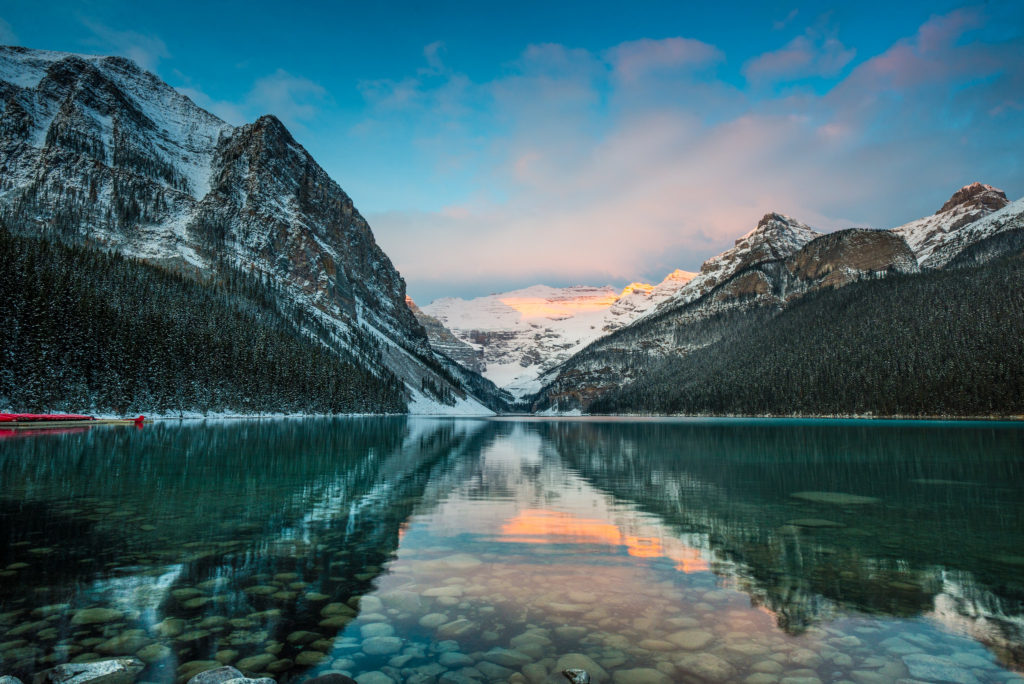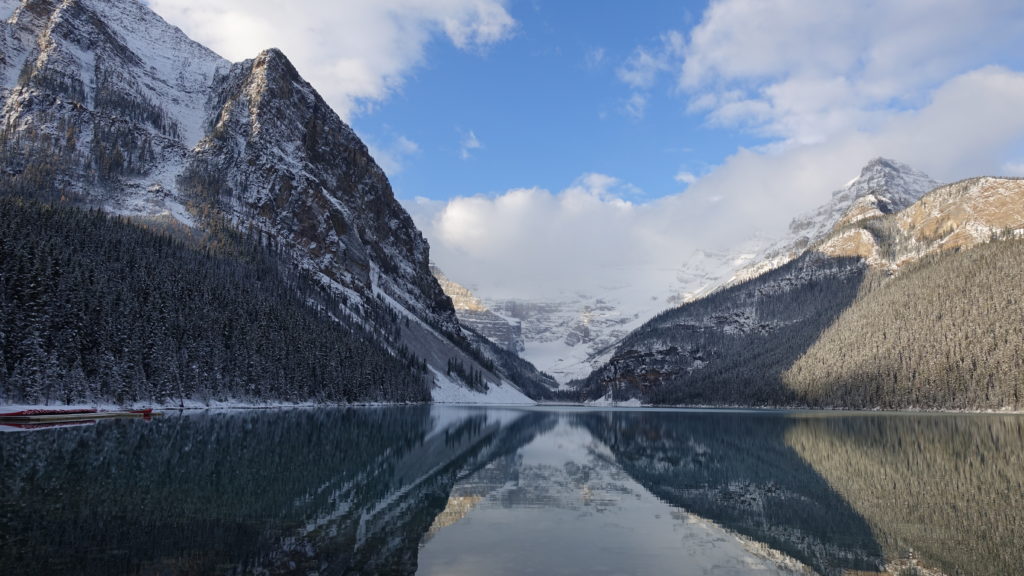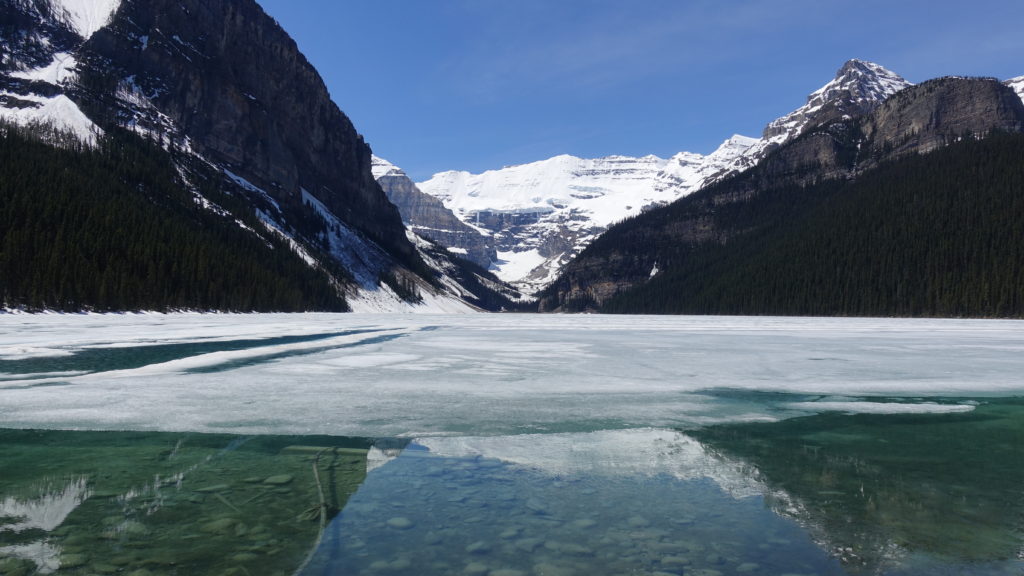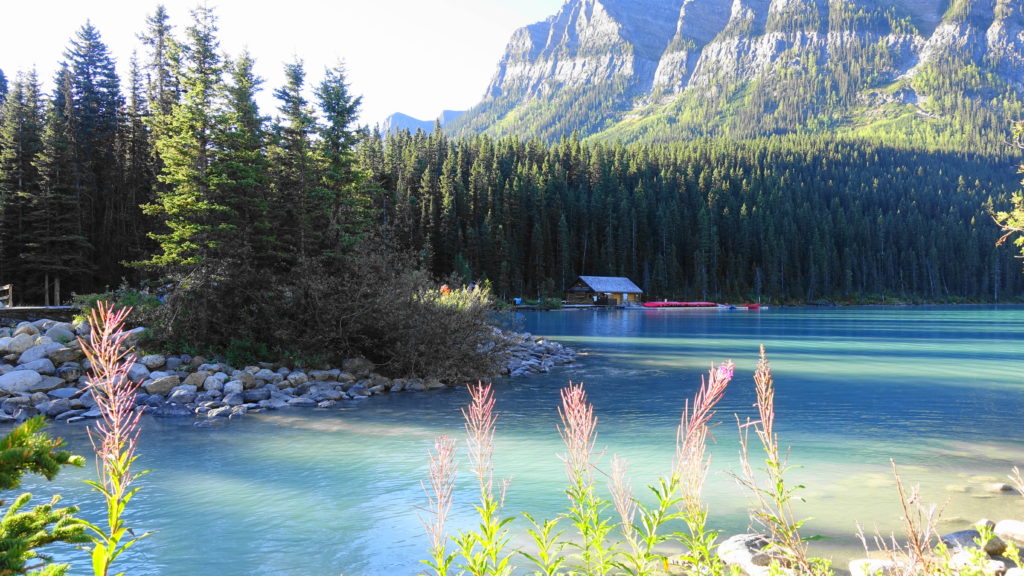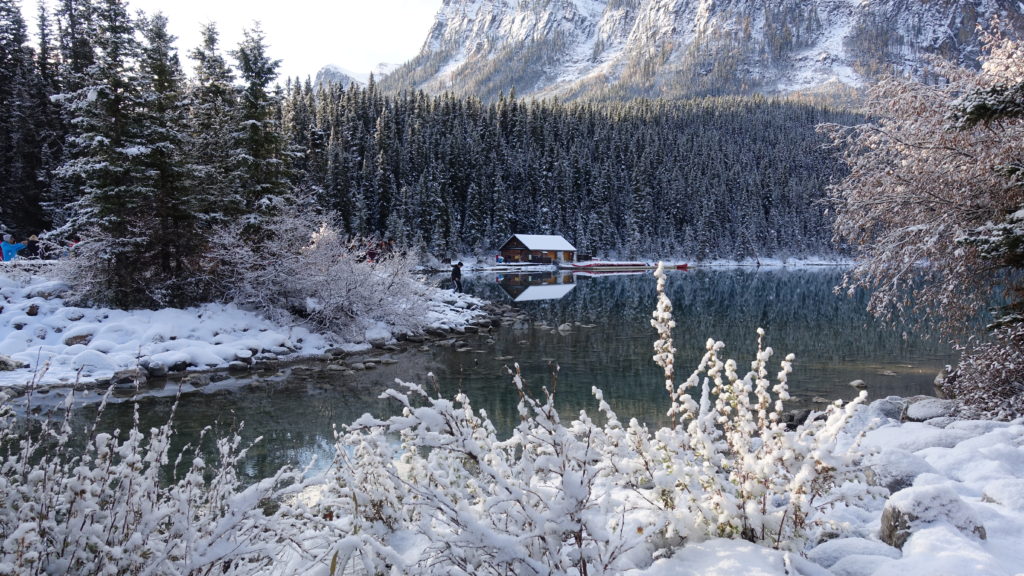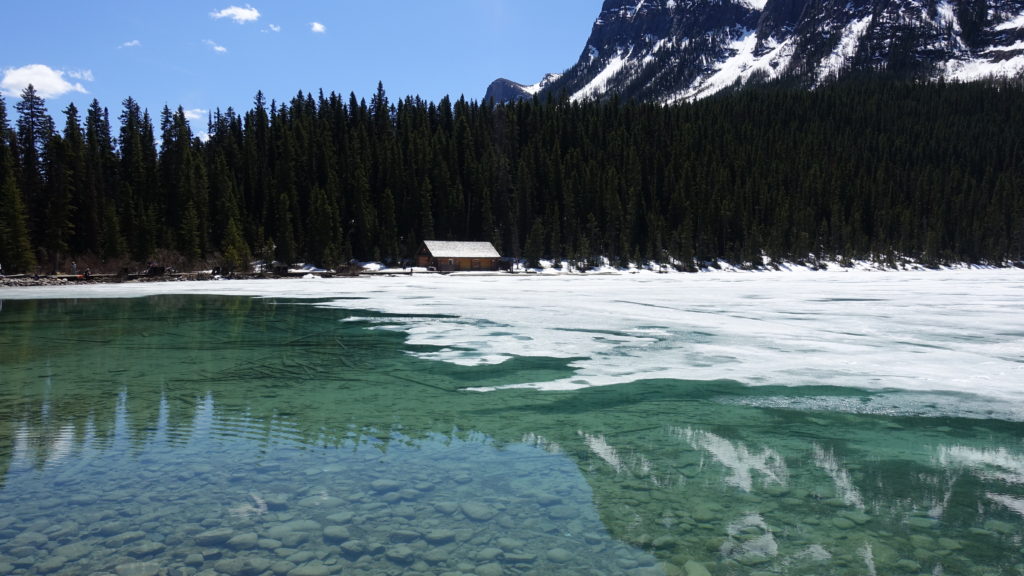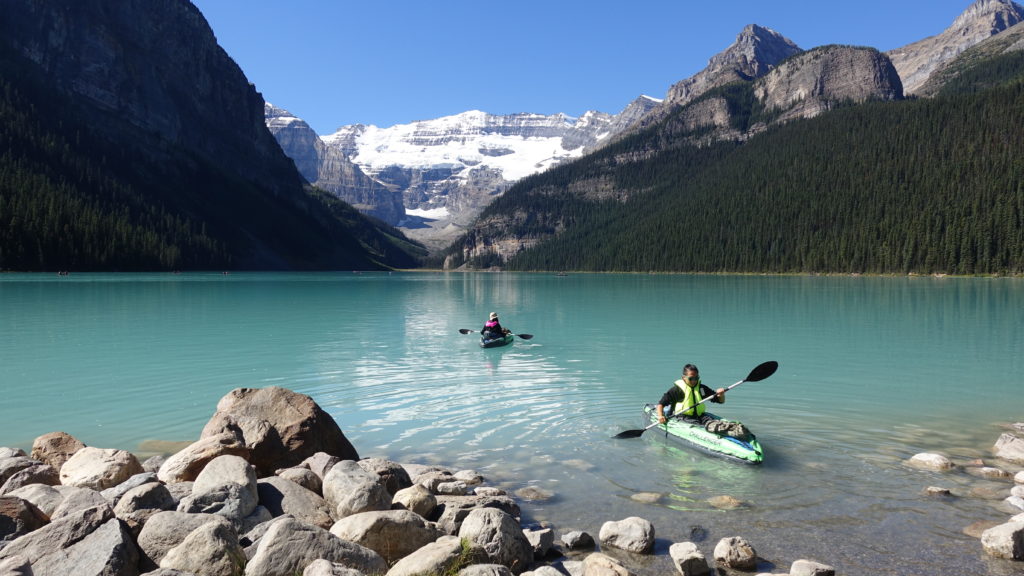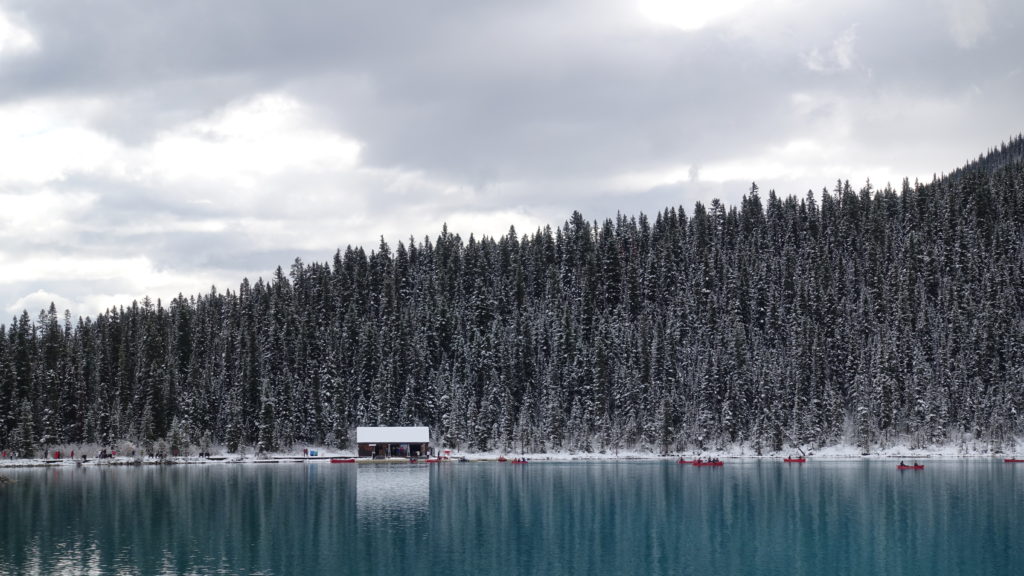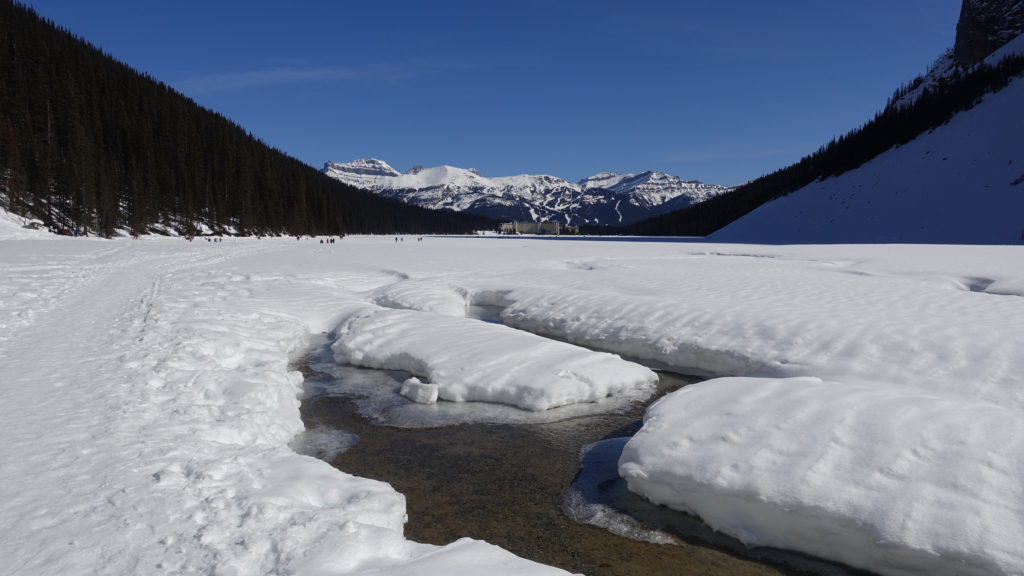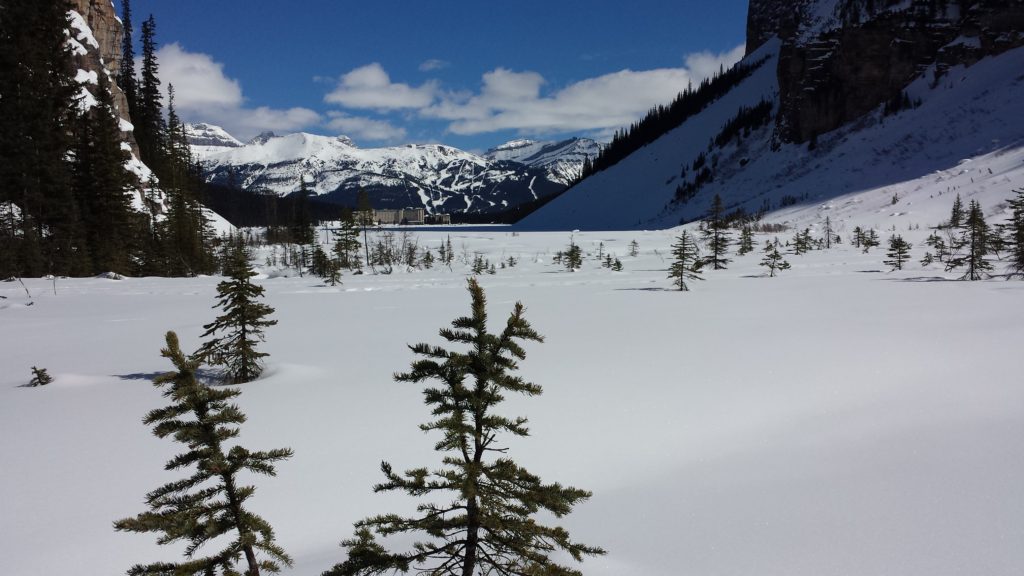Lake Louise is a hamlet within Banff National Park in Alberta, Canada. Named after Princess Louise, Duchess of Argyll, it lies in Alberta’s Rockies on the Bow River, 3 km (1.9 mi) northeast of the lake that shares its name. Initially settled in 1884 as an outpost for the Canadian Pacific Railway, Lake Louise sits at an elevation of 1,600 m (5,200 ft), making it Canada’s highest community. The nearby lake, framed by mountains, is one of the most famous mountain vistas in the world; the famous Chateau Lake Louise also overlooks the lake.
History
Since time immemorial the Indigenous peoples of Canada have lived in the foothills and forests of the Rocky Mountains including what is today Lake Louise, where they hunted bison and other big game animals. In the Stoney language of the Nakoda people the area is called Ho-run-num-nay, meaning “lake of the little fishes”.
During the 1870s, the construction of the Canadian Pacific Railway (CPR) started. The railway was planned to run through Bow Valley. A Nakoda guide took CPR workman Tom Wilson to the site in 1882, and Wilson named it Emerald Lake. The hamlet was later called Holt City, and then Laggan, before being renamed Lake Louise.
Lake Louise was added to Banff National Park in 1892, and has since become a tourist destination made accessible by its location off the Trans-Canada Highway. The hamlet’s historic CPR station building has been preserved and today operates as a restaurant.
